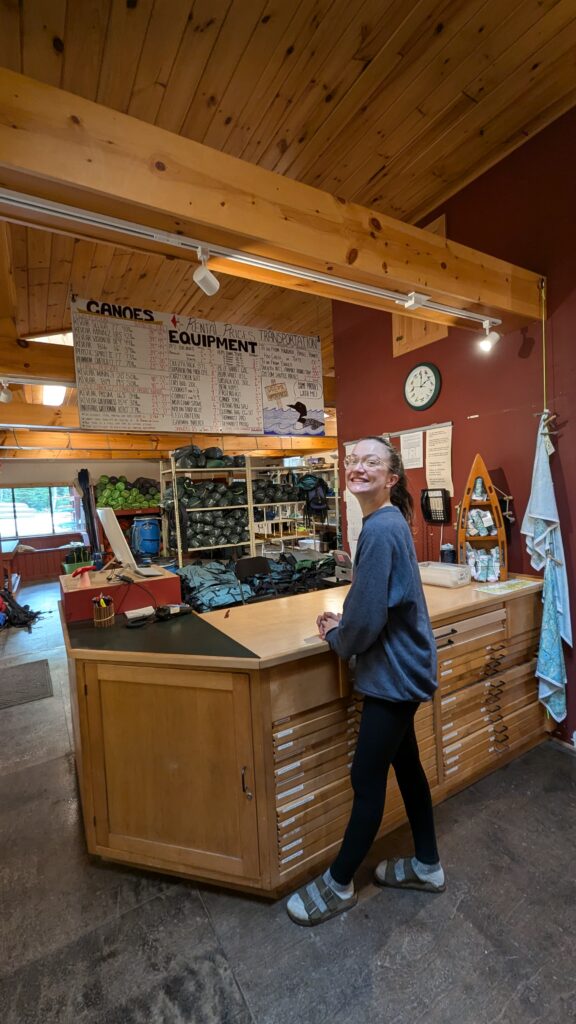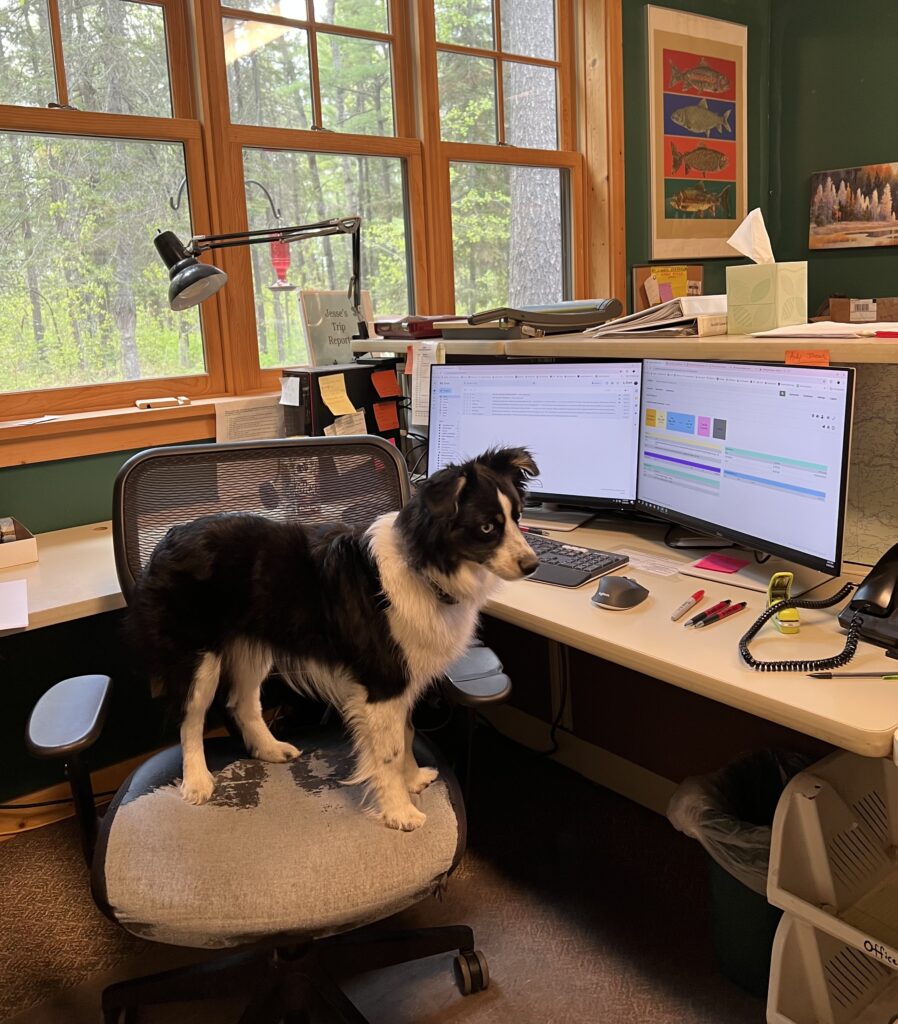6/19/24 – Every year around this time, we here at Sawbill field a number of calls and questions about the bug situation. Many people want to know how “bad” the bugs are. Today I decided to talk about what bugs we have and some preventative measures that you can employ in the wilderness. Most folks are familiar with the main biting bugs we have up here. There are mosquitos, black flies, deer and horse flies, and no-see-ums.

First up is the mosquito. There are over 50 species of mosquitoes in Minnesota. The most common is the Summer Flood mosquito, Aedes vexans. They appear in May and usually disappear by September. A couple other species include the Cattail mosquito and the Tree hole mosquito. Cattail mosquitoes differ from other mosquitoes during the larval stage. Cattail mosquito larvae are able to survive the winter by attaching to the roots of cattails allowing them to breath, compared to most other species that lay eggs in stagnant water and experience diapause (hibernate but for insects) within the eggs. Females of many of the species in Minnesota feed on blood as a way to create her eggs. An up close look at the proboscis, or little needle looking protrusion on the face of the mosquito, shows that what seems to be a single tube is actually six highly specialized apparatus. At the small scale mosquitoes exist at, skin is more akin to finely woven mesh rather than the solid sheet that we on our human scale see. These six pieces work together to move and pierce through the mesh of their victims. Luckily, males only feed on nectar and sap, and are major pollinators.


Black flies are known by a few different nicknames, the Buffalo gnat, Turkey gnat, or White Socks. The nickname “buffalo gnat” comes from the shape of their thorax, which gives the humped appearance similar to the American Buffalo. There are 30 known species found in Minnesota. Common genera are Simulium, Prosimulium, Austrosimulium, and Cnephia. Black fly larvae are important aspects of a healthy environment. They process a lot of organic material in the rivers and streams they reside in and are a good source of food for other larger water dwelling creatures, from dragonfly larvae to waterfowl. As with the mosquitoes, the female black fly feeds on blood to produce the needed protein to make her eggs.
Last but certainly not least, though least visible, is the No-see-um, aka Biting midge. The No-see-ums are a part of the Culicoid genera. This is a genera of almost exclusively biting midges. The distinction between flies and midges is that midges are a part of the non-mosquito family in the order Diptera (flies). No-see-ums typically disperse about half to one mile away from their larval development site. Following the trend with the mosquitoes and black flies, it is the female no-see-um that are the ones that bite. Males feed on nectar and sap, and do not have the necessary mouth parts to feed on blood.

Mosquitoes, black flies, and no-see-ums all find their blood meals by following biological signals. Most common that people know about is their ability to hone in on CO2 exhalations. Unfortunately, these bugs don’t just rely on CO2, so please don’t try to hold your breath until they leave you be. Body heat, lactic acid, uric acid, and fatty acid are all used to find dinner for these insects. There is one study that suggests that blood type may play a role in a person’s attractiveness to mosquitoes, though other scientists are skeptical. It may come down to genetics and natural body odor.
DEET and permethrin are common ingredients in bug spray, but they are both known to be toxic to humans and pets. It is also very difficult to make sure it only kills the pest bugs and not other helpful invertebrates. I’m not going to tell you to not use DEET or permethrin, but I will give some other non-bug spray alternatives that might interest you. First line of defense is the clothes you wear. Try to avoid reds, oranges, and blacks. Wearing light/white clothes will help keep you cooler, thus producing less body heat and CO2 for the bugs to track you with. If long sleeves interest you, there are sun shirts that are very light weight that will give protection not only from the sun (very important) but also the bugs. Another option is bug netting. There is an important distinction between mosquito netting and no-see-um netting. No-see-ums are so small that they can get through the holes in the meshing on mosquito nets. Fortunately the mosquitoes cannot get through no-see-um nets! Bug jackets are another great option. The Original Bug Shirt Company has great options for bug shirts and pants. There is both a polyester model and cotton model available.
A healthy food web is an integral part of a healthy planet. As annoying as these pests are, and as much as I sometimes wish I could snap my fingers to make them disappear, mosquitoes, black flies, and no-see-ums are a big part of the ecosystems they inhabit. There are numerous animals that feed on all life stages of these insects. According to the Smithsonian Magazine, Dragonfly adults can consume between 30 to 100 mosquitoes in one day. Dragonflies have a hunt success rate of 90-95%. Larval dragonflies are also voracious predators, eating the larvae of mosquitoes and black flies. Up here at Sawbill, we always rejoice when the dragonflies finally hatch! Bats are another great predator to have around to control the bug population. Some bats can eat up to 1,000 insects in a single hour!

Mosquitoes, black flies, and no-see-ums are a part of the wilderness up here. There are ways to help mitigate annoyance so vacation time is enjoyable while still making sure the wilderness stays healthy. -Sawyer
























